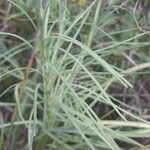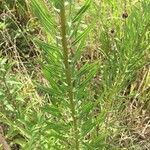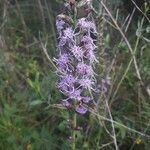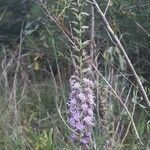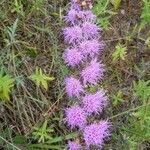Short-hairy, or glabrous throughout, 4–15 dm; lowest lvs 5–40 × 1–4.5 cm, long-petiolate; cauline lvs 25–90 below the infl; heads (10–) ± numerous in an elongate-spiciform infl, or the peduncles occasionally more elongate and to 5 cm; invol 8–15 mm, campanulate or subhemispheric, glabrous, its bracts loosely spreading or squarrose, tending to be bullate, often purplish upward, with conspicuous, lacerate, often crisped, scarious margins that are sometimes folded under; fls 14–35 per head; cor hairy toward the base within; pappus barbellate; 2n=20. Dry, open places and thin woods, especially in sandy soil; N.D. to Okla. and Tex., e. to Mich. and Miss., and occasionally to s. Ont., O., w. Va. and n. Fla. Aug.–Oct.
